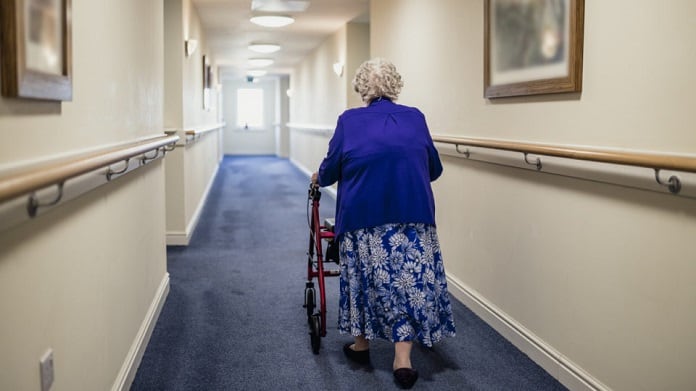Fully three-quarters of the 909 deaths caused by COVID-19 in Australia so far have been among aged care residents, a total of 685 people. The virus tore through aged care homes, particularly in Victoria’s second wave last year.
But the pandemic has only exposed the ongoing dysfunction in Australia’s aged care system that already existed due to government neglect.
The recently released findings of the three-year Royal Commission into Aged Care show that the sector is permeated by a severe level of neglect and suffers from chronic shortages of funding.
“At times in this inquiry,” co-commissioner Lynelle Briggs wrote, “it has felt like the Government’s main consideration was what was the minimum commitment it could get away with, rather than what should be done to sustain the aged care system so that it is enabled to deliver high quality and safe care.”
Although the commissioners failed to estimate how much extra funding was needed, they documented an accumulated $9.8 billion in cuts in annual funding by 2018-19 as a result of the actions of successive governments.
The Royal Commission estimated Australia spends just 1.2 per cent of total GDP on aged care, compared to an average of 2.5 per cent for similar nations.
A major injection of funding is also needed into at-home care, with the report criticising the failure to fund packages for 100,000 people wanting to stay in their own homes and already on the waiting list.
The report recommended a system where the elderly have the right to the standard of care they need, instead of the current approach that rations limited resources.
It also found chronic problems with inadequately trained workers and inadequate numbers of staff in aged care homes.
The proportion of registered nurses in the workforce fell from 21 per cent in 2003 to 14.6 per cent in 2016. More than half of residents are in homes with levels of staff it described as “unacceptable”.
The COVID crisis exposed how reliant aged care homes are on a casualised, underpaid workforce.
Workers are not given the time and resources to properly care for each person.
Residential aged care homes are notorious for abuse and neglect, with a survey showing 39 per cent of residents have experienced some form of abuse, including emotional and physical abuse.
An estimated 30 per cent of people have received substandard care and as many as 68 per cent in residential care homes were malnourished or at risk of malnutrition.
Free market model
These problems are also the product of a largely profit-driven system and high levels of privatisation.
The 1997 Aged Care Act, introduced under John Howard’s Coalition government, produced many of these problems, removing the requirement to have a registered nurse on duty at all times and cutting $1 billion in funding. It also allowed private companies to increase their share of the sector to around 40 per cent of aged care beds.
This means the rich are able to purchase a higher quality of services, with some eastern suburbs aged care homes in Sydney offering spas and allowing residents to order from restaurants each day, given that they fork out $2.2 million to secure a room.
The Royal Commission found that just 1.4 per cent of residents lived in aged care homes with “best practice care” levels of staff.
Its report found that, “staffing ratios should be introduced to ensure that there are sufficient nursing and other care staff present at all times in residential aged care”.
This echoes what the Australian Nursing and Midwifery Federation has long argued.
As its federal secretary, Annie Butler, put it, “Our politicians must come together and act now on the Royal Commission’s recommendation that providers meet a minimum staff time quality and safety standard which guarantees all health and care needs of older Australians are met.”
But there is no indication that Scott Morrison’s Coalition is about to provide the funding needed. It refused to release the report until minutes before a press conference announcing the government’s response.
Its aim was to prevent media outlets having time to digest the full scandal of neglect and abuse outlined in the Royal Commission’s report, ensuring coverage instead of a government announcement of a paltry $452 million funding boost.
There needs to be an end to private companies creaming off profits from aged care in a sector where 75 per cent of overall funding is provided by government.
Aged care needs to be nationalised, with adequate government funding to provide proper care.
Anything less will see the appalling levels of abuse of the elderly exposed in the Royal Commission simply continue.
By Tooba Anwar





